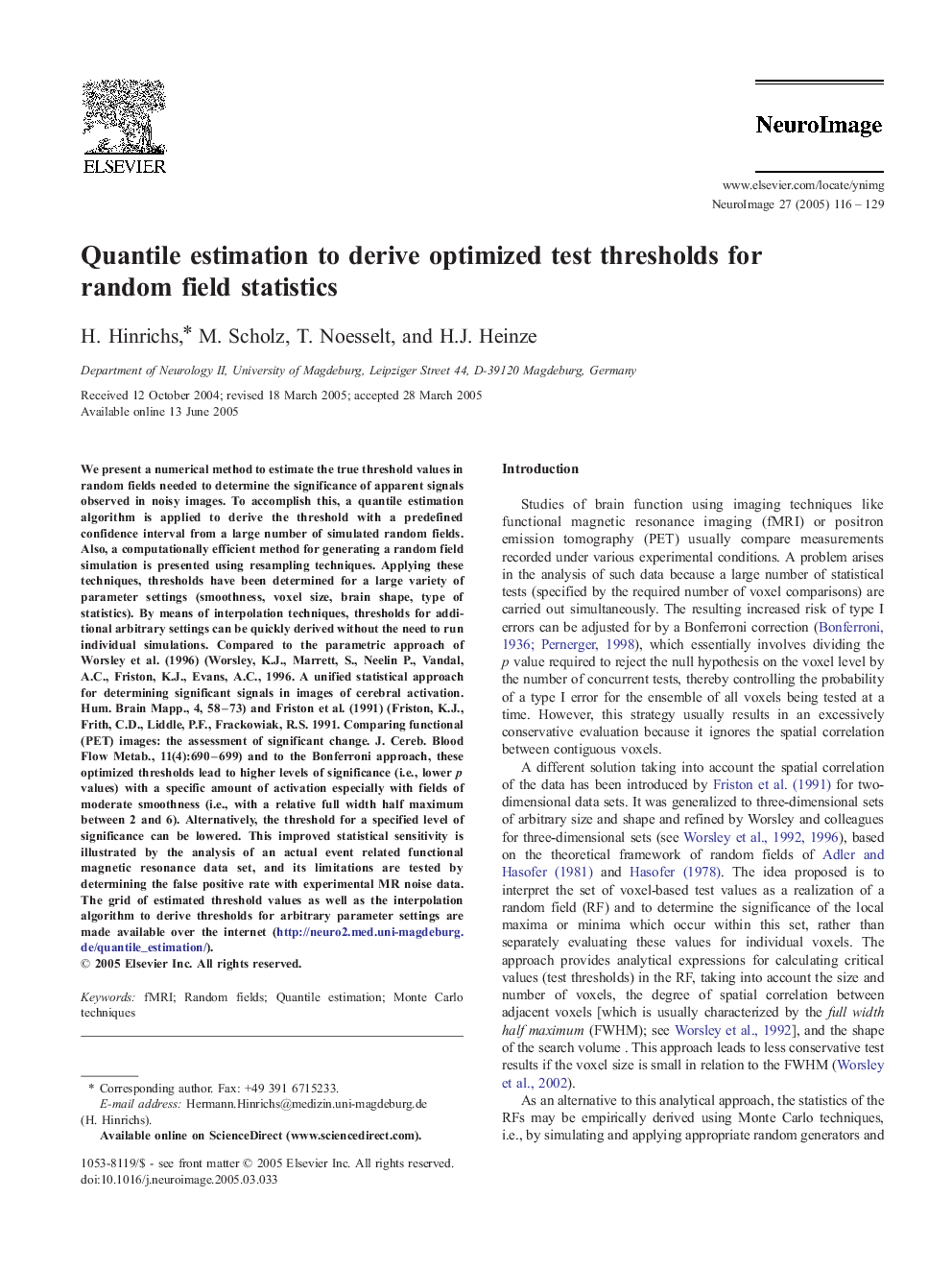| Article ID | Journal | Published Year | Pages | File Type |
|---|---|---|---|---|
| 9197793 | NeuroImage | 2005 | 14 Pages |
Abstract
We present a numerical method to estimate the true threshold values in random fields needed to determine the significance of apparent signals observed in noisy images. To accomplish this, a quantile estimation algorithm is applied to derive the threshold with a predefined confidence interval from a large number of simulated random fields. Also, a computationally efficient method for generating a random field simulation is presented using resampling techniques. Applying these techniques, thresholds have been determined for a large variety of parameter settings (smoothness, voxel size, brain shape, type of statistics). By means of interpolation techniques, thresholds for additional arbitrary settings can be quickly derived without the need to run individual simulations. Compared to the parametric approach of Worsley et al. (1996) (Worsley, K.J., Marrett, S., Neelin P., Vandal, A.C., Friston, K.J., Evans, A.C., 1996. A unified statistical approach for determining significant signals in images of cerebral activation. Hum. Brain Mapp. 4, 58-73) and Friston et al. (1991) (Friston, K.J., Frith, C.D., Liddle, P.F., Frackowiak, R.S. 1991. Comparing functional (PET) images: the assessment of significant change. J. Cereb. Blood Flow Metab. 11(4), 690-699), and to the Bonferroni approach, these optimized thresholds lead to higher levels of significance (i.e., lower p values) with a specific amount of activation especially with fields of moderate smoothness (i.e., with a relative full width half maximum between 2 and 6). Alternatively, the threshold for a specified level of significance can be lowered. This improved statistical sensitivity is illustrated by the analysis of an actual event related functional magnetic resonance data set, and its limitations are tested by determining the false positive rate with experimental MR noise data. The grid of estimated threshold values as well as the interpolation algorithm to derive thresholds for arbitrary parameter settings are made available over the internet (http://neuro2.med.uni-magdeburg.de/quantile_estimation/).
Related Topics
Life Sciences
Neuroscience
Cognitive Neuroscience
Authors
H. Hinrichs, M. Scholz, T. Noesselt, H.J. Heinze,
